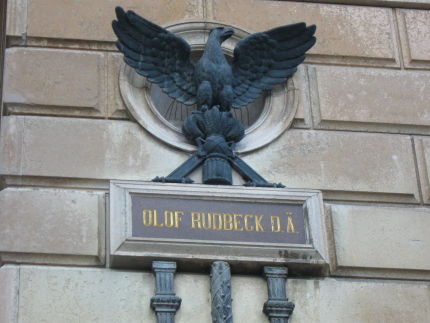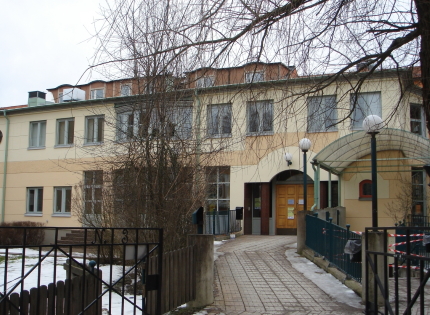Uppsala University
As previously mentioned, Uppsala’s Cathedral was consecrated in 1435. It was the need for priest training that contributed to the formation of Uppsala University under the Catholic Church of Sweden. It was founded in 1477 making it the oldest university in Scandinavia. The political turmoil during the Lutheran Reformation in the 1500s led to changes not only in ideology, but the economic foundation of the University.

S.Pathkiller 2009, Olof Rudbeck was a key figure in Uppsala history, CC
In the 17th century King Gustav II Adolf gave a boost to Uppsala University with his financial support and the donation of more than 300 farms. The properties continue to be owned and under the direction of the University. One very important character who shaped the university’s direction at the time was Olof Rudbeck, a trained physician and scholar. He is the one who had the top built on the Gustavianum Museum.

S.Pathkiller 2009, Kalmar Nation, one of the 13 student nations at the University., CC
It was also during the 1600s that a system in which students who came from the same region were joined together to form “student nations” or student clubs. Today there are 13 active student nations, each named after a Swedish province like Gothenburg, Norrland or Kalmar.
Much like student unions in other universities, the student nations manage different social activities like sports events, dances. They might operate pubs or restaurants and even some housing. A 14th nation was later formed, named after Skåne so that students who do not wish to participate in club activities may become a member.
The 18th century was a time of growth for the University, especially in the area of natural sciences. King Gustav III donated the Royal Castle Gardens to the university, which was later renamed as the Botanical Garden. It was also during this time that Carl Linnaeus became a professor, gaining international acclaim, attracting visitors from all over the world, as well as sending his own students on expeditions to several different countries.
There were other well-known scholars beside Linnaeus making a name for themselves in this era as well. The astronomer, Anders Celsius devised a thermometer which we use today. Nils Rosén on the Faculty of Medicine was a pioneer in pediatric medicine. Torbern Bergman, a chemistry professor, collaborated with Carl Wilhelm Scheele to ascertain various elements, such as oxygen. Following in the footsteps of these notable scientists, there have been eight Nobel laureates who have been affiliated with Uppsala University.

E. Grandin 2009, The University Hall, CC
Many changes came under way during the 19th century. The educated middle class took a more prominent role in political issues, so too did the student body at the school. The student union was formed in 1849, directed by a board consisting of representatives from each student nation. Women were permitted to study at the University beginning in the 1870s. Perhaps the most famous scholar of this era was Erik Gustaf Geijer, a historian whose statue stands in front of the main university building. The building, called University Hall was presented by the Swedish State to mark the 400th anniversary of the school and officially opened in 1887.
Today over 40 thousand students are enrolled each year at Uppsala University, with about half of them studying full time. The school’s profile is as a research university and it has around 3,000 research partnerships around the world.